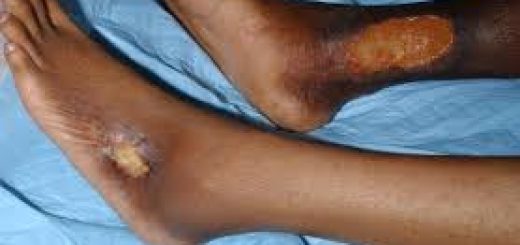Caraphenol A May Facilitate Faster, More Effective Gene Therapies for Sickle Cell Anemia, Study Says

IN NEWS.
Caraphenol A — a small molecule closely related to a natural compound called resveratrol, which is produced by red grapes — increased the efficacy of hematopoietic stem cell-based gene therapy, a new study shows.
The molecule holds potential to shorten the time and cost of using these gene therapies to treat patients with blood disorders, such as sickle cell anemia.
“If you can repair blood stem cells with a single gene delivery treatment, rather than multiple treatments over the course of many days, you can reduce the clinical time and expense, which removes some of the limitations of this type of approach,” Bruce Torbett, PhD, associate professor in the department of immunology and microbiology at Scripps Research, and leader of the study, said in a news release.
The study, “Resveratrol trimer enhances gene delivery to hematopoietic stem cells by reducing antiviral restriction at endosomes,” was published in the journal Blood.
Hemoglobin is the protein in red blood cells that binds oxygen, allowing it to be transported around the body. A specific mutation in the HBB gene, which encodes a component of hemoglobin, leads to the production of the abnormal hemoglobin S. This abnormality leads to the formation of sickle red blood cells, causing sickle cell anemia.
Gene therapies involve either altering the mutated gene or introducing a healthy version of it into the body. For sickle cell anemia, this means genetically altering the patient’s own hematopoietic stem cells (bone marrow cells which divide and specialize to produce blood cells, including red blood cells).
Genes are introduced into the cells using a harmless modified virus (known as a lentiviral vector). The cells are then transplanted back into the patient where they will produce healthy red blood cells. Gene therapy is advantageous over a bone marrow transplant, as it circumvents the complications associated with a bone marrow donation.
Stem cells, especially self-renewing hemopoietic stem cells, have many barriers against viruses, including interferon-induced transmembrane (IFITM) proteins. This means that the delivery of genes using viruses can take many attempts, making gene therapy expensive and time-consuming.
“This is why gene therapy of hemopoietic stem cells has been hit-or-miss,” Torbett added. “We saw a way to potentially make the treatment process significantly more efficient.”
Previously, the researchers showed that short-term treatment of the stem cells with two compounds, called rapamycin and cyclosporine, increased the delivery of healthy genes. However, this led to undesirable effects: rapamycin decreased cell growth, and cyclosporine led to unwanted toxicity.
The researchers then looked at caraphenol A, a small molecule closely related to resveratrol, which is a natural compound known for its anti-inflammatory effects.
They showed that adding caraphenol A to human hemopoietic stem cells, along with lentiviral vectors, increased the efficiency of gene delivery. Furthermore, caraphenol A treatment was considered to be non-toxic, as the growth of the cells was not affected.
Caraphenol A helped the gene delivery to overcome the cells’ barriers to viruses, allowing the vectors to enter the cells more easily. The small molecule decreased temporarily the levels of IFITM protein and their association with late endosomes (membrane-bound compartments used by some viruses for cellular entry and transport).
Furthermore, following transplantation into mice, the stem cells successfully divided and produced blood cells containing the new gene. Mice transplanted with stem cells that had been treated with caraphenol A showed higher gene marking levels, which remained stable over time compared with mice transplanted with stem cells that had been treated with a control compound. Importantly, caraphenol A did not alter the integration of the viral vector into the genome, or influence the stem cells’ transformation (differentiation) into different blood cell types.
This more-efficient gene delivery method could decrease the costs and time associated with gene therapy, as well as improve treatment outcomes, the researchers said.
The longer that stem cells remain outside the body and are manipulated, the greater the chance for them to lose their ability to self-generate (which is required for gene therapies to work). Thus, by reducing the time required, this new method may help ensure that the self-renewing properties of stem cells are not lost.
“Gene delivery strategies that minimize treatment time, expense, complexity, and vector concentrations are of critical importance for advancing the fields of gene therapy and cellular engineering to the clinic,” the researchers wrote.
“We anticipate that the use of caraphenol A may help achieve these goals, whereas our findings may help to uncover additional restriction pathways that facilitate enhanced gene delivery to stem cells,” they said.
Patricia holds her Ph.D. in Cell Biology from University Nova de Lisboa, and has served as an author on several research projects and fellowships, as well as major grant applications for European Agencies. She also served as a PhD student research assistant in the Laboratory of Doctor David A. Fidock, Department of Microbiology & Immunology, Columbia University, New York.




Recent Comments